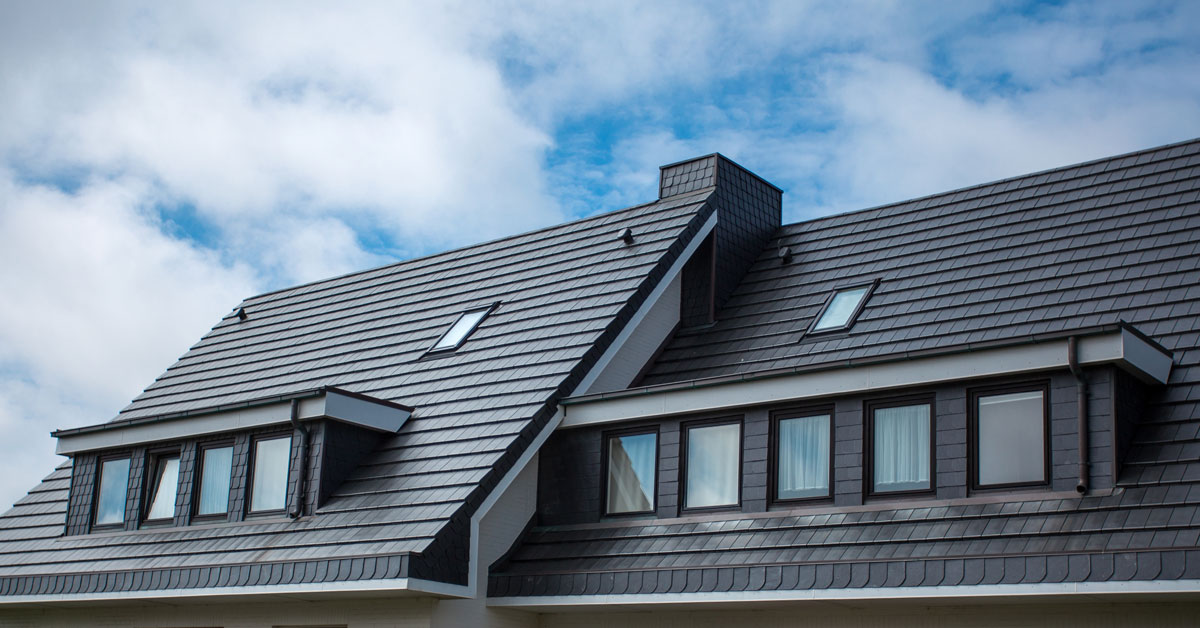Comparing Costs Amongst Roofing Companies in Gainesville Florida
Comparing Costs Amongst Roofing Companies in Gainesville Florida
Blog Article
Best Practices for Ensuring Correct Roofing Ventilation
Making certain correct roof covering ventilation is crucial for the longevity and efficiency of a roof. A balanced consumption and exhaust air vent proportion, typically 1:300, plays an essential duty, with intake vents preferably put at the reduced edge of the roofing for trendy air entrance and exhaust vents at the height for cozy air departure. Regular examinations to identify clogs and maintain clear air flow are paramount. Keeping insulation away from vents is critical to stop airflow restriction. Comprehending these foundational aspects sets the stage for even more detailed insights into setup and maintenance techniques that can dramatically boost your roof's efficiency.
Understand Ventilation Basics
Effectively comprehending air flow fundamentals is vital for ensuring the longevity and performance of roofing systems. Efficient ventilation mitigates dampness accumulation and temperature extremes in the attic, both of which can lead to considerable structural damages in time. A well-ventilated roof covering helps in preventing common problems such as mold and mildew growth, wood rot, and ice dams, which can jeopardize the integrity of the roofing products and the underlying frameworks.
The primary goal of air flow is to promote the motion of air, permitting a constant exchange in between the exterior and indoor atmospheres. This equilibrium is attained with a mix of intake and exhaust vents that work with each other to keep optimal airflow. Consumption vents, normally located along the soffits or eaves, permit fresh air to get in the attic room area, while exhaust vents, typically situated at or near the roofing system ridge, enable warm, moist air to run away.
Key aspects influencing the performance of roof covering ventilation consist of appropriate positioning, sufficient sizing, and making sure that both intake and exhaust vents are unobstructed. Routine examination and upkeep are vital to determine potential clogs, damages, or ineffectiveness in the ventilation system, therefore securing the roofing system's efficiency and longevity.
Kinds of Roofing System Vents
Roof vents play a crucial duty in maintaining reliable attic air flow and, by extension, the total health and wellness of the roofing system. Different sorts of roofing vents are readily available, each with special advantages tailored to details roofing demands. Ridge vents, for example, are set up along the roof's optimal, enabling cozy, humid air to get away from the attic room. They provide continual ventilation and mix perfectly with the roofline, making them both reliable and visually pleasing.

Soffit vents are set up under the eaves and work in tandem with roof vents to guarantee a balanced intake and exhaust system. By allowing cooler air to get in from below, soffit vents assist in the expulsion of warm air through upper vents. Gable vents, situated on the outside walls of the attic, offer one more efficient service, specifically in homes with gable roofings.
Evaluate Your Existing Air Flow

Next, consider the age and problem of your roof materials and ventilation elements. Older systems might not comply with current building ordinance or may have worn away gradually, lowering their effectiveness. Conduct an extensive examination to recognize any kind of signs of deterioration, such as corrosion, damage, or spaces that can endanger the system's efficiency.
Furthermore, determine the attic room temperature and moisture degrees. High temperature levels and humidity can show inadequate air flow.
Installation Best Practices
Reliable setup of roof ventilation systems is official website critical for ensuring optimal performance and durability. Appropriate installment begins with comprehending the specific ventilation requirements of the structure and the roof it covers. This involves computing the correct ratio of intake to tire vents, normally sticking to the 1:300 regulation, which specifies one square foot of air flow for each 300 square feet of attic flooring room.

Consumption vents must be mounted at the roofing system's reduced side, commonly in the soffits, to allow amazing air to get in. Exhaust vents, on the various other hand, must be mounted near or at the roof's height to help with the exit of warm, wet air.
Seal all vent links diligently to avoid air leakages and possible water infiltration. Use top quality materials and follow producer guidelines to guarantee longevity and performance. Additionally, integrating ridge vents with baffles can dramatically improve airflow efficiency by preventing wind-driven rain and snow from getting in the attic.
Ultimately, exact setup of roofing ventilation systems reduces prospective problems such as mold and mildew development, ice dams, and structural damages, ensuring the roof's honesty and the building's general health.
Routine Upkeep Tips
Consistency in maintenance techniques is fundamental to guaranteeing the long-lasting performance of roof ventilation systems. Routine examinations are important, preferably executed biannually-- in the spring and loss. Throughout these examinations, ensure that vents are complimentary of debris, nests, and various other obstructions that might restrain air flow. Examine for any indications of wetness buildup or mold, as these can indicate incorrect ventilation or leaks (roofing companies).
Use a soft brush or a vacuum cleaner to remove dirt and particles from consumption and exhaust vents. Be careful not to harm the vent displays or louvers during the process.
Correct insulation is just as find out important. Ensure that attic room insulation does not obstruct the vents, as this can drastically restrict airflow. If any insulation has actually moved or worked out, reposition or replace it to maintain an efficient obstacle.
Finally, change any type of damaged or missing out on elements promptly. Busted vents, fractured tiles, or shabby blinking can all add to insufficient ventilation and ought to be resolved without delay. Normal upkeep makes certain that find out here the roofing air flow system functions efficiently, thus extending the lifespan of the roofing system itself.
Final Thought
Making certain appropriate roof covering ventilation is paramount for preserving the efficiency and longevity of a roofing system. Adherence to the 1:300 intake and exhaust air vent proportion, combined with the calculated placement of vents, is important.
A balanced intake and exhaust air vent proportion, frequently 1:300, plays a pivotal role, with consumption vents preferably put at the lower edge of the roofing for trendy air entry and exhaust vents at the height for cozy air exit. Intake vents, typically located along the eaves or soffits, permit fresh air to get in the attic room room, while exhaust vents, frequently situated at or near the roof ridge, make it possible for hot, moist air to run away.
Soffit vents are mounted under the eaves and job in tandem with roof vents to make sure a well balanced consumption and exhaust system. By enabling cooler air to go into from below, soffit vents help with the expulsion of hot air through top vents. Adherence to the 1:300 consumption and exhaust vent proportion, paired with the critical positioning of vents, is essential.
Report this page